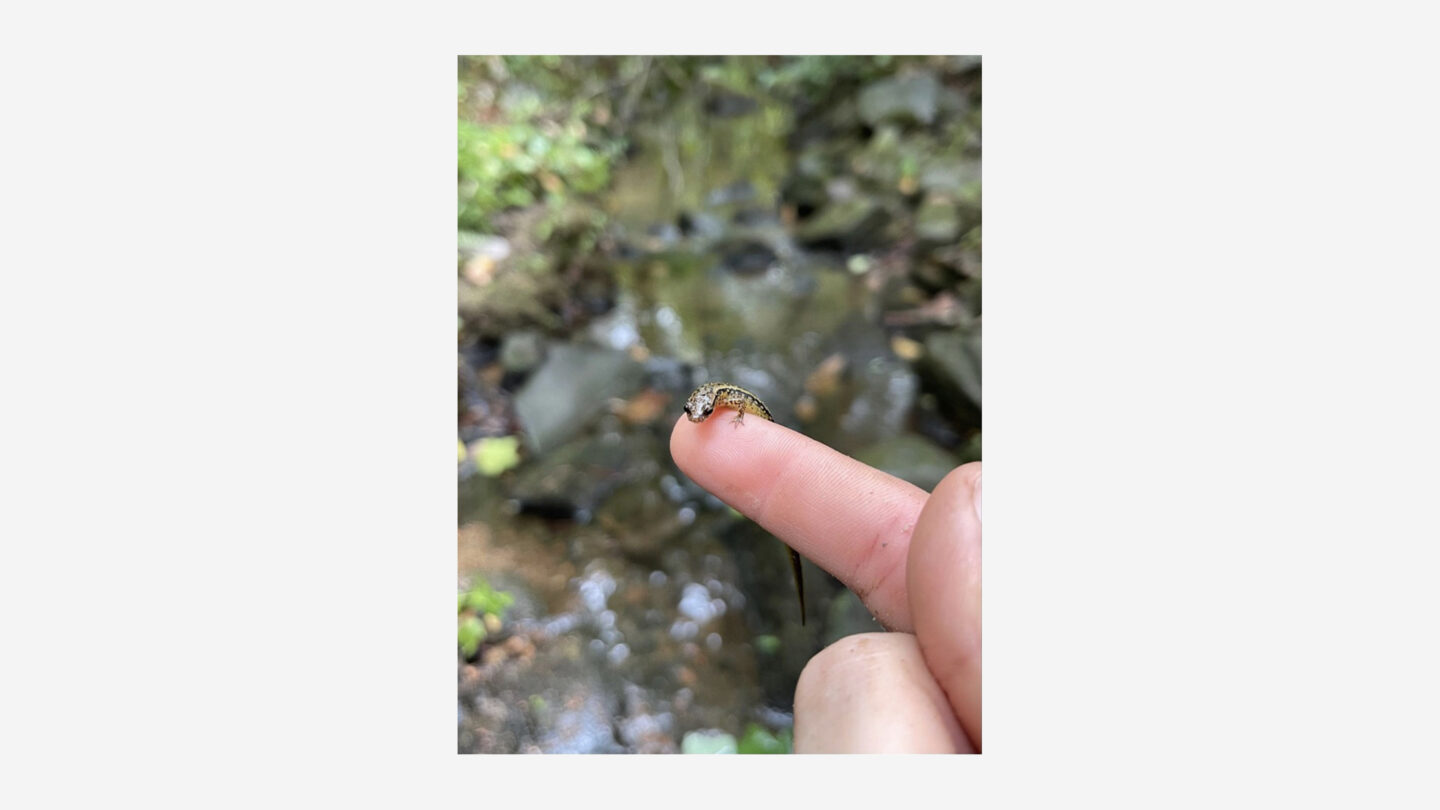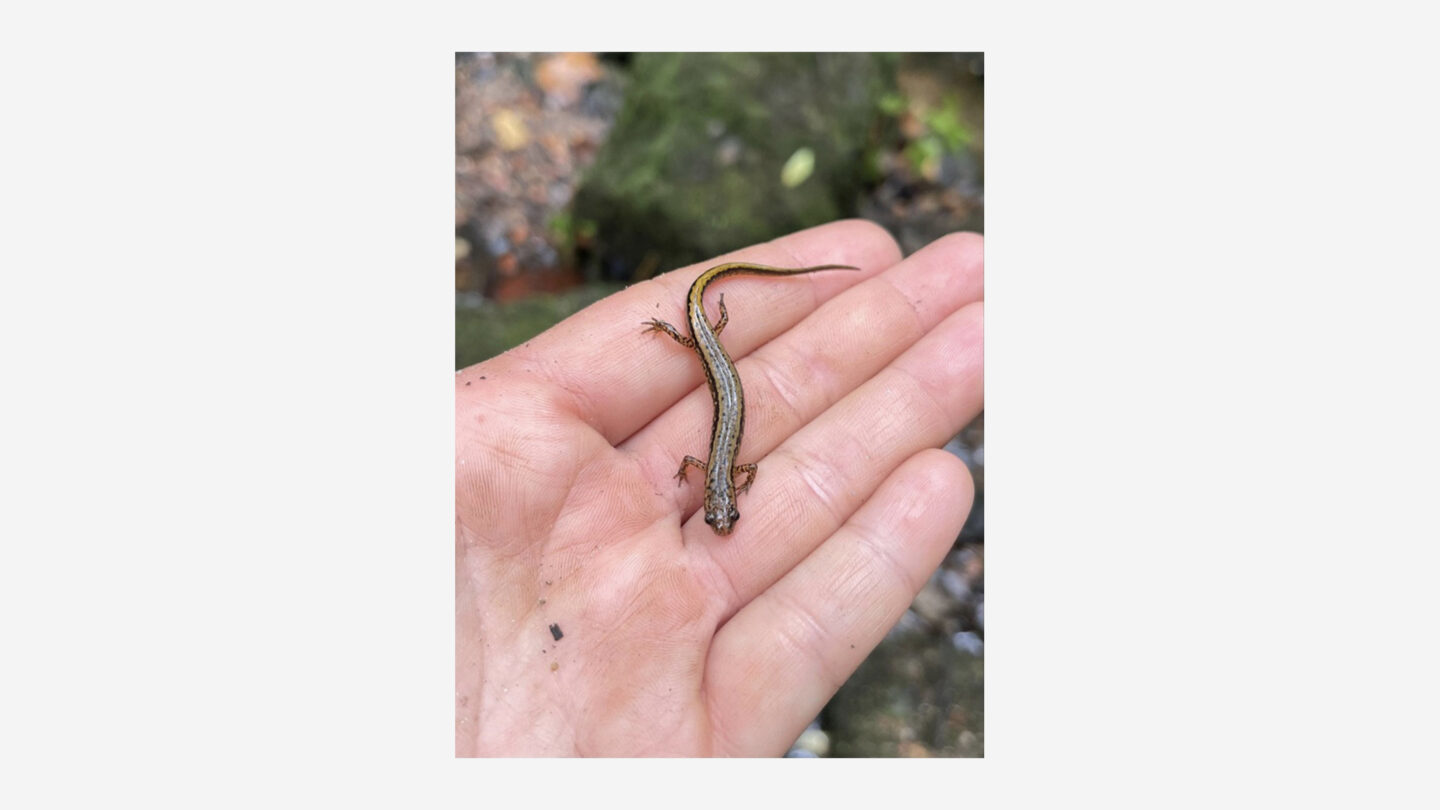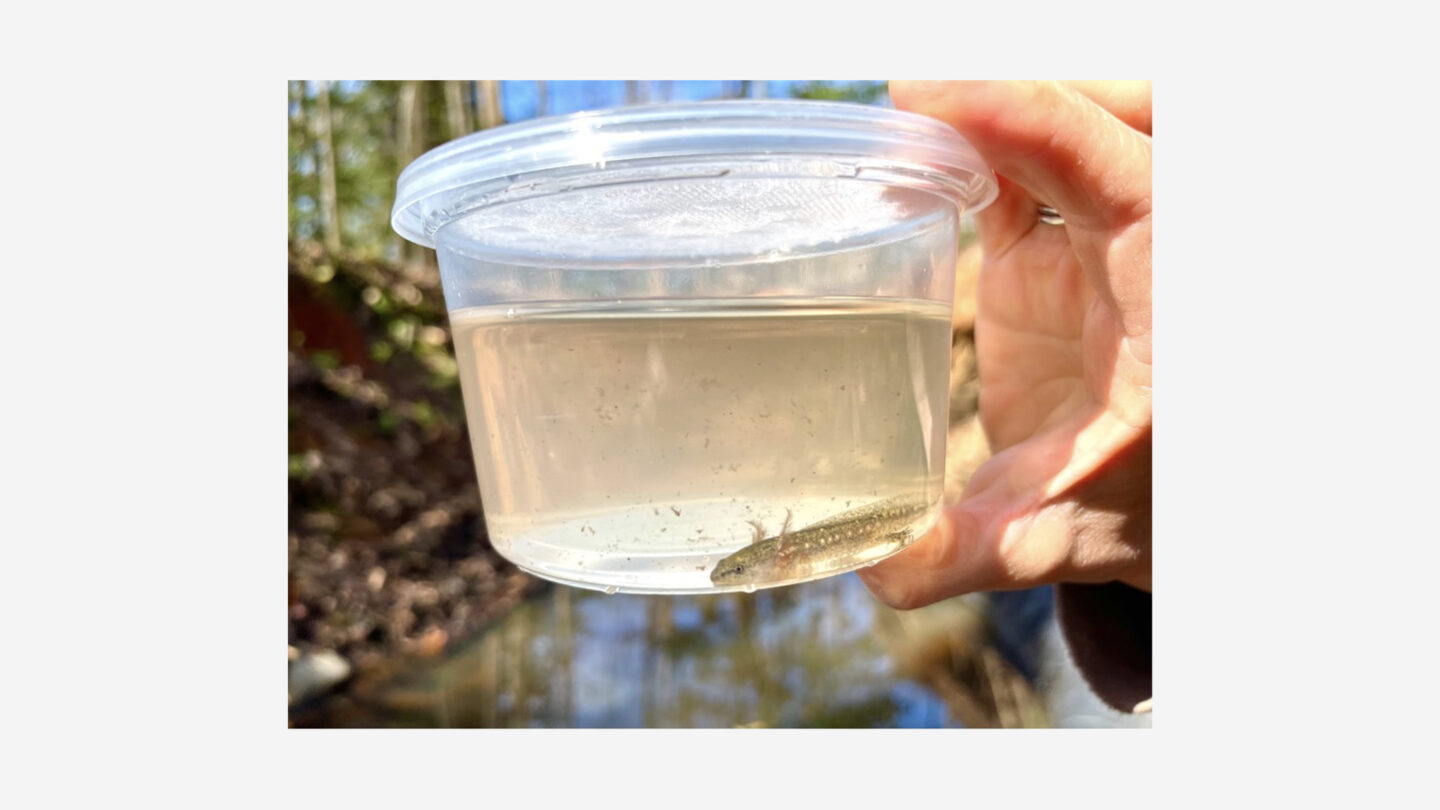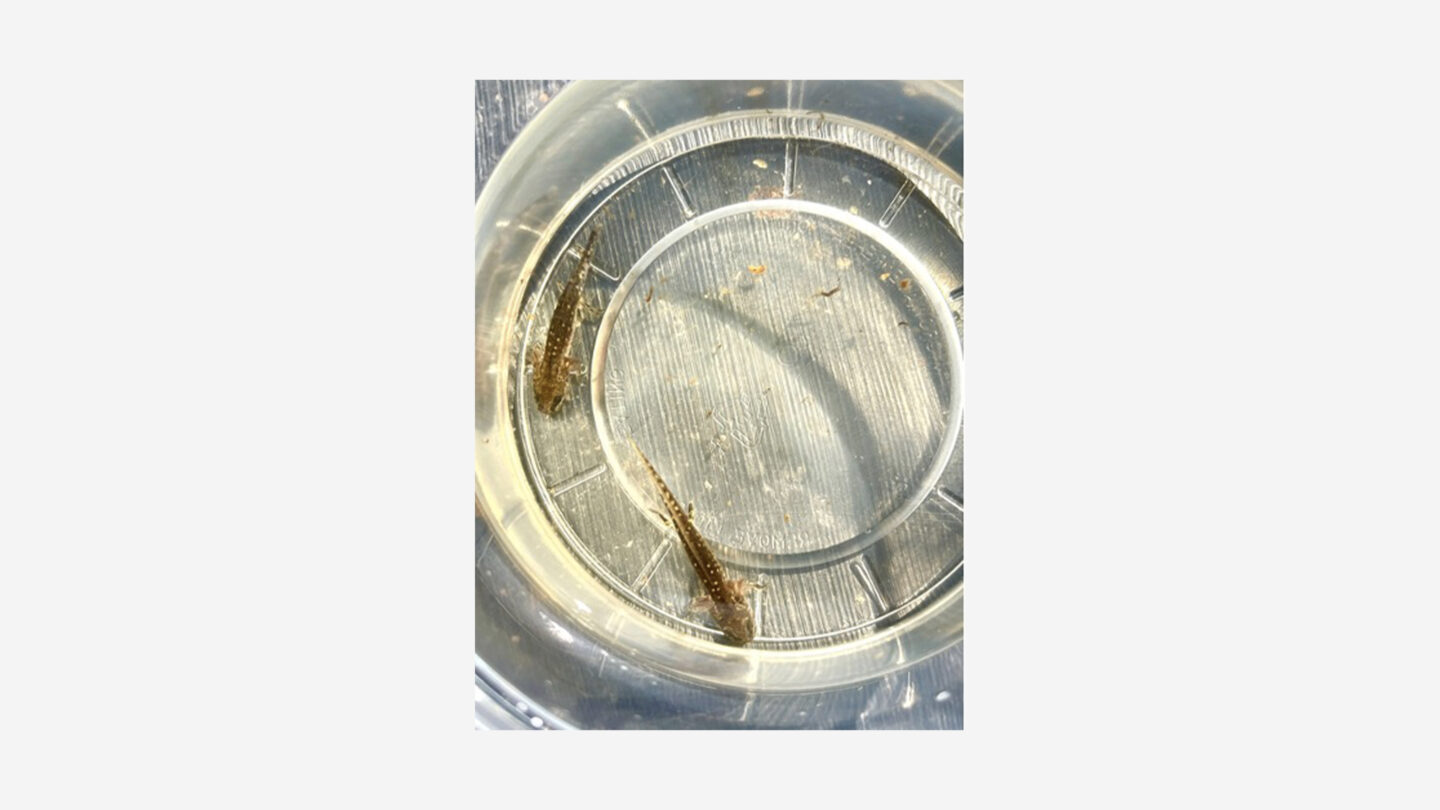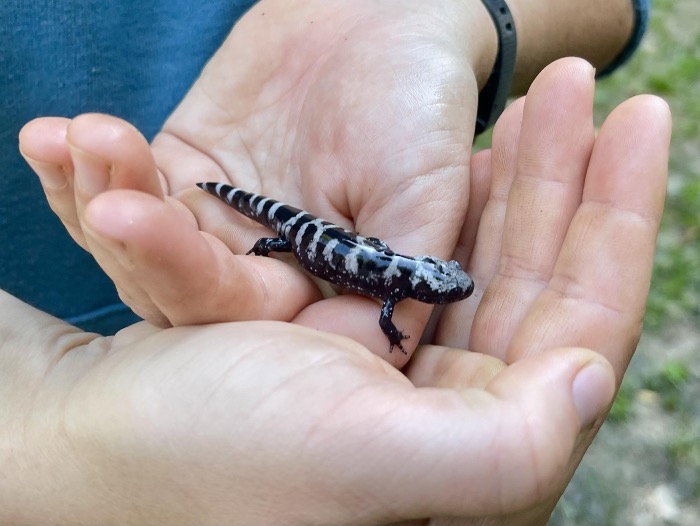
Although in the heart of a busy urban neighborhood, the Goizueta Gardens are host to many species of native wildlife. Species of all kinds are drawn to pockets of green in heavily developed environments, and the 33-acre Atlanta History Center grounds are no exception.
Some of the most surprising and easily overlooked wildlife residents in Goizueta Gardens are salamanders. Salamanders are amphibians, like frogs and toads, although they look more like small lizards. Many of the species live underground or under rotting logs and leaf litter, and often only emerge at night. Like most amphibians, salamanders breathe through their skin, so they must keep their skin moist. Hiding in cool, damp places makes them easy to miss and keeps them safe.
The southeastern United States, and the southern Appalachian Mountains in particular, is the center for salamander diversity globally. More salamander species are found in the southern Appalachian Mountains than anywhere else in the world. The wet, cool mountains provide an abundance of suitable habitat, and the tall peaks and deep valleys isolate salamander populations, driving the formation of new species.
Goizueta Gardens is home to six species of salamanders: southern two-lined (Eurycea cirrigera), southern red-backed (Plethodon serratus), slimy (Plethodon glutinosus), spotted dusky (Desmognanthus conanti), spotted (Ambystoma maculatum), and marbled (Ambystoma opacum). The Atlanta History Center property is an especially good urban habitat for salamanders. In particular—the preservation of Swan Woods in a natural state, with rotting logs and leaf litter, provides habitat and supports the insects and invertebrates that salamanders eat. Salamanders are voracious insect predators, preying on the larvae and adult forms of many insects such as mosquitos.
Spotted salamander in its protected habitat, Swan Woods of Goizueta Gardens
The small creek—Buckhead Branch—that runs through Goizueta Gardens is also particularly important for a healthy salamander population. The creek provides habitat for the spotted dusky salamanders at AHC, which prefer wet, rocky areas near fast-moving water, and provides a place for the southern two-lined salamanders to breed and lay their eggs.
The ecologically sensitive landscape management practices that Goizueta Gardens staff employ also help foster a robust salamander population. The use of any herbicide and pesticide, both very toxic to salamanders, is minimized as much as possible through the use of integrated pest management practices, hand-pulling weeds, and sustainable soil health endeavors such as creating and utilizing compost and compost tea. When necessary for the health of permanent collections, landscape management decisions about chemical inputs are always made with a researched understanding of any effects on wildlife, with the gentlest, typically organic, application.
As mentioned above, six species of salamanders can be found in Goizueta Gardens, four naturally occurring on the property and two additional species introduced through a partnership with the Amphibian Foundation, an Atlanta area non-profit based in the Blue Heron Nature Preserve on Roswell Road, focused on implementing lasting solutions to fight the global amphibian extinction crisis.
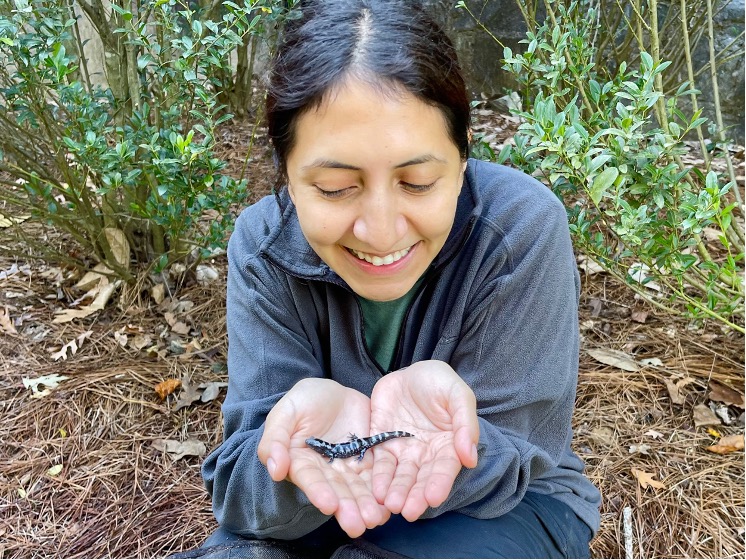
Lexly Evans, Horticulturist for the Entrance Gardens, holds a mature marbled salamander that was lounging in the Swan House Gardens near the cascade fountain. Marbled salamanders get their name from the silvery-grey to white bands across their bodies, creating a “marbled” appearance.
In 2017, in preparation for our reintroduction efforts with the Amphibian Foundation, Goizueta Gardens staff dug and prepared a small, lined pond in a protected location in Swan Woods as a place for spotted salamanders to breed. Like many other salamander species, spotted salamanders live on land most of the year but return to seasonally wet, or vernal pools, in forests to breed and lay their eggs. The eggs mature and hatch in these pools, and young salamanders live in them until they are ready to move out into the surrounding forest. After the pool was constructed, the Amphibian Foundation brought spotted salamander egg masses from other locations around the city and placed them in the pond. For several years it was unclear if the introduction was successful due to the secretive life of this species, but in the spring of 2021, a mature spotted salamander was discovered by Goizueta Gardens staff in Swan Woods. Several weeks later, egg masses were discovered in the breeding pond, and larval salamanders were discovered shortly thereafter.
Spotted Salamander egg mass
Encouraged by this success and seeing egg masses increase year after year, it was decided to introduce another native species, the marbled salamander, into this location. Marbled salamanders exhibit stable populations throughout their range (eastern United States) but have nearly disappeared in Metro Atlanta due to habitat loss. To assist this species in re-inhabiting the Atlanta area, the Amphibian Foundation has performed exhaustive surveys to identify where marbled salamander populations continue to exist, identifying two existing populations within the Atlanta area. To conserve these populations, the Amphibian Foundation staff collect a small selection of eggs from these ephemeral wetlands and hatch them out in their husbandry labs to ensure the success of the next generation. They are then relocated into new homes, such as right here at Atlanta History Center.
In March of 2022, the Amphibian Foundation joined Goizueta Gardens staff to release a total of 58 marbled salamanders into the Swan Woods breeding pool. These marbled salamanders were between 4-5 months old, in their larval form which is the stage between embryo and adult. Marbled salamanders are a fossorial species, meaning they spend most of their life underground, so it came as a wonderful surprise when members of the Gardens team found a marbled salamander while completing routine fountain maintenance at the Swan House (the fountains run on well water). This nearly mature salamander was the first one ever noted on site, and it is highly likely it belonged to the population of larvae released into the pool the previous March. This salamander trekked around 360 feet to the fountain, which is a long trip for an animal who is only 3.5” in length.
Goizueta Gardens serves as a safe haven in the city for flora and fauna to flourish. Partners such as the Amphibian Foundation aid in increasing the population of native, vulnerable species. This was also made possible by our long-term supporters, the Peachtree Garden Club, who established Swan Woods in 1967, have continually volunteered to maintain the woodlands, and have provided funding for the building and maintenance of the amphibian habitat among many other projects.
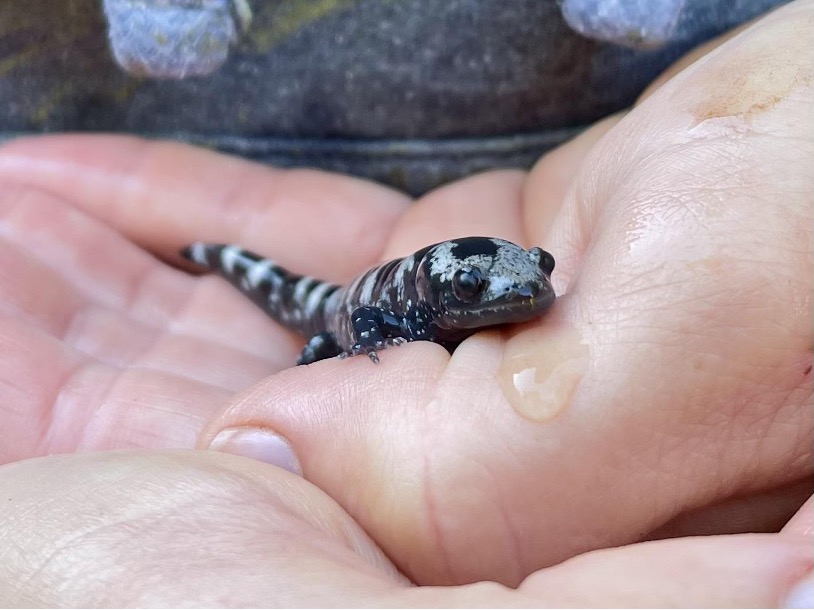
A marbled salamander found in the iconic cascade fountain at Swan House. Please note that handling is not recommended; they have secretion glands on their tails that can irritate if it gets in the handler’s eyes or other mucous membrane.
When next visiting Atlanta History Center, make sure to take some time to walk around Goizueta Gardens and reflect on the fact that all around there could be salamanders going about their lives, denizens of a subterranean world, one of the myriad expressions of life that can be observed in this one small island of preserved green in the great, teeming urban sprawl of the Anthropocene.
Ways You Can Support.
To support the Amphibian Foundation, visit their website and tap the “How You Can Help” link from the drop down menu to learn how you can get involved
To support the Goizueta Gardens at Atlanta History Center, please consider donating or volunteering here.




